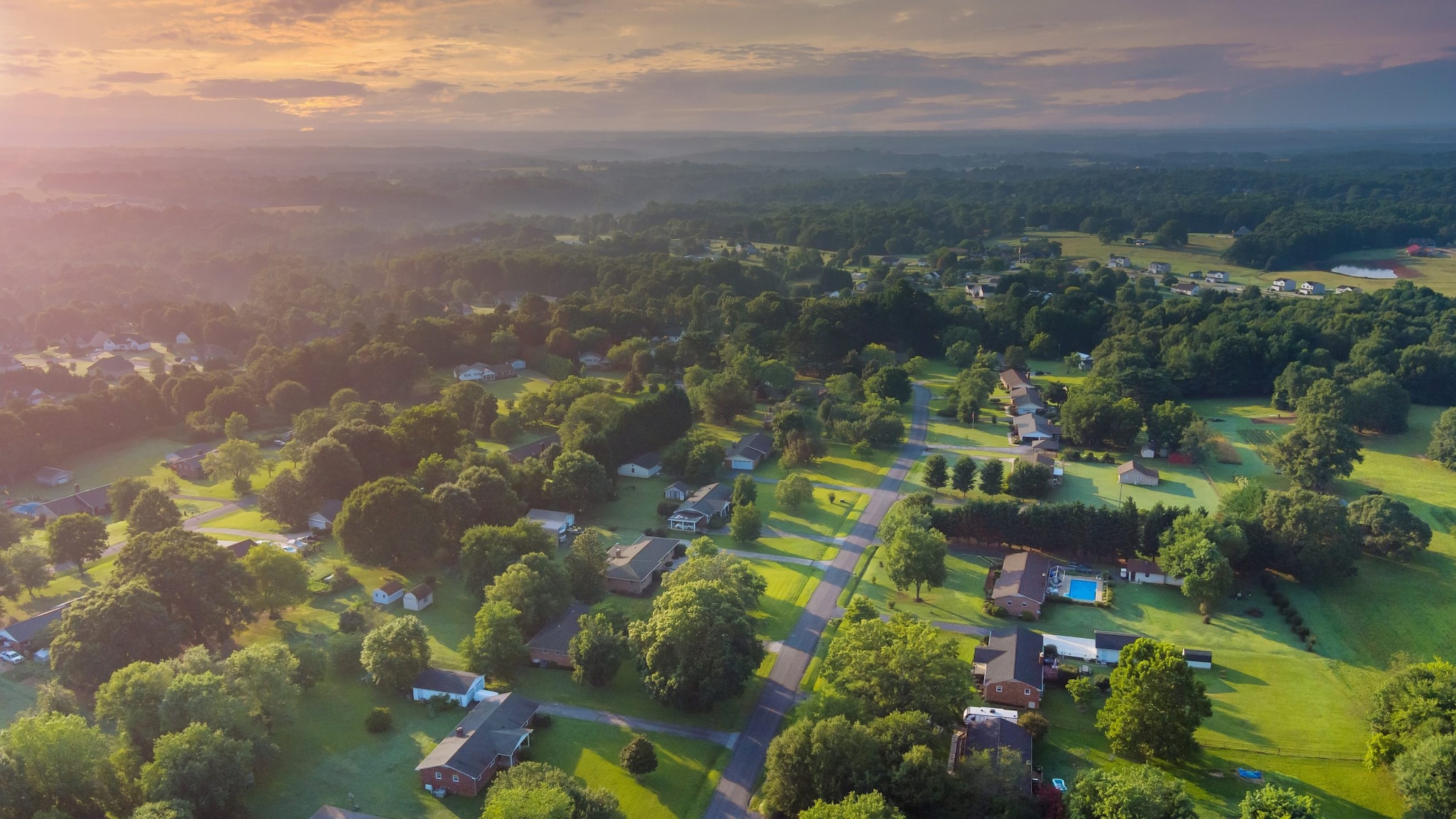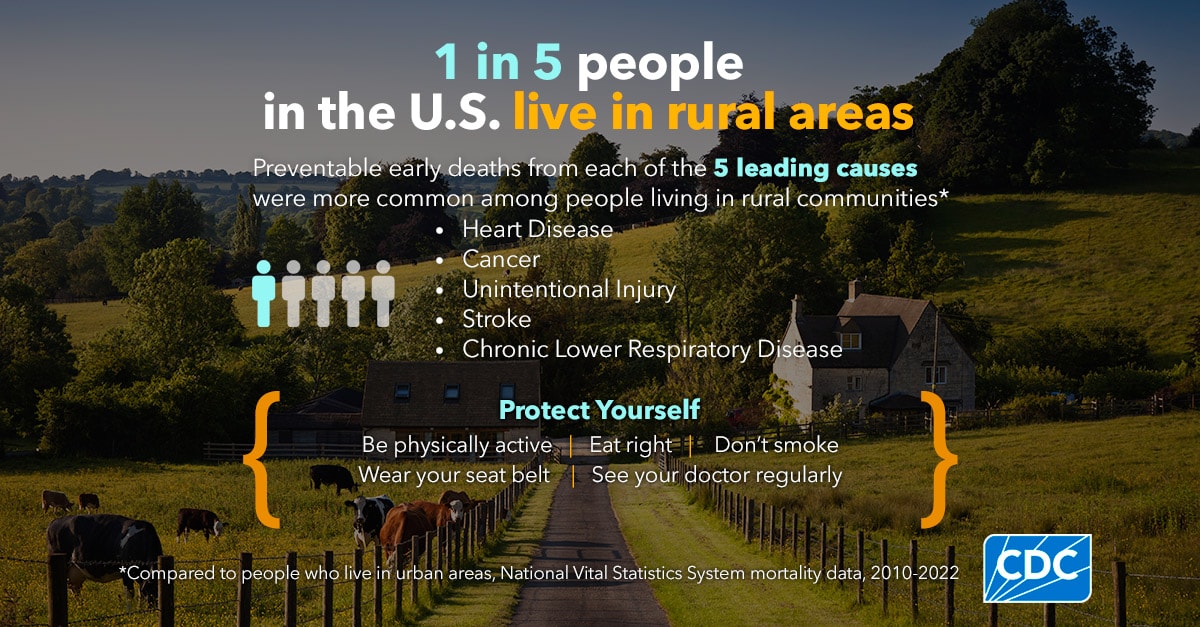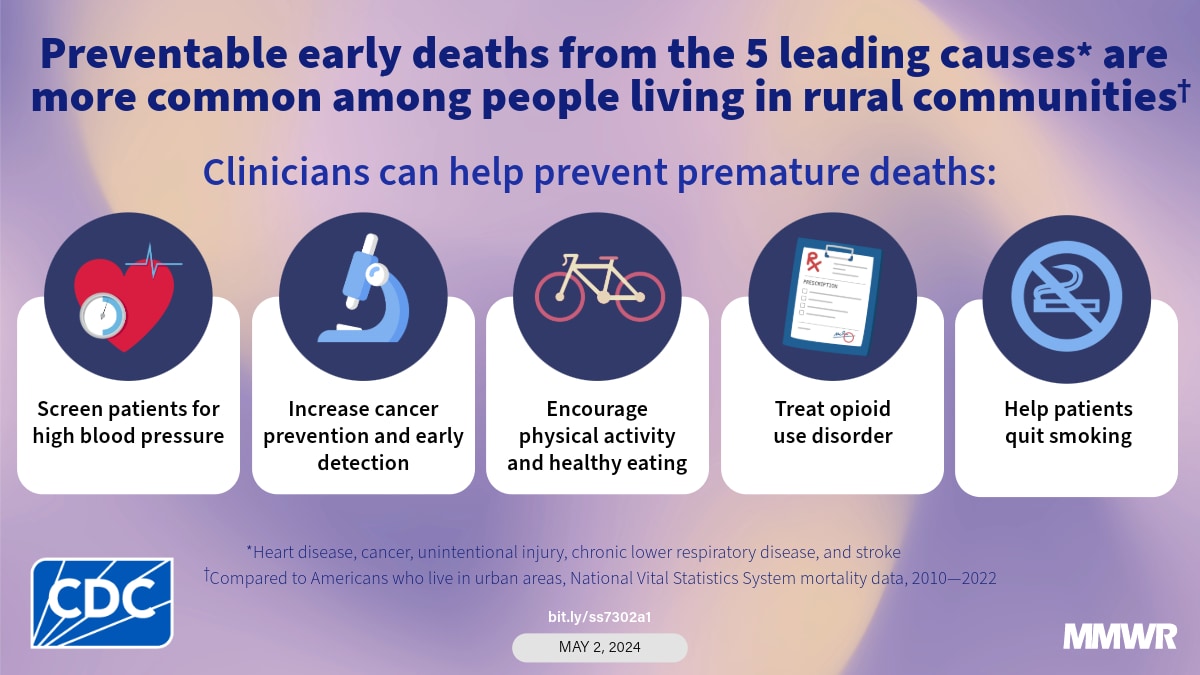Key points
- People living in rural areas are more likely to die early from the five top causes of death than their urban counterparts.
- More of these deaths are potentially preventable in rural areas than in urban areas.
- Reasons for the health gap between rural and urban residents include social, structural, and environmental factors.

Overview
One in five people in the U.S. live in rural areas. They are more likely than urban residents to die early from the following leading causes of death:
- Heart disease
- Cancer
- Unintentional injuries
- Chronic lower respiratory disease, or CLRD
- Stroke
Preventable deaths in rural America in 2022
Why rural residents have higher health risks
The following demographic, environmental, economic, and social factors might put rural residents at higher risk of death from public health conditions:
- Older age and more illness than their urban counterparts
- Higher rates of cigarette smoking, high blood pressure, and obesity
- Less leisure-time physical activity and lower seatbelt use
- Higher rates of poverty
- Less access to healthcare and health insurance.
What can be done to improve the health of rural communities
A CDC report provides data from 2010-2022 on the widening gap in some causes of preventable early deaths between rural and urban areas. The findings can help guide local public health programs to reduce these health risks by:
- Screening patients for high blood pressure
- Increasing cancer prevention and early detection
- Encouraging physical activity and healthy eating
- Promoting smoking cessation
- Promoting motor vehicle safety
- Treating opioid use disorder
The findings in this report also highlight the need to understand and address the social, environmental, and structural factors contributing to disparities in preventable early deaths between rural and urban areas.

Resources
What the science says:
Rural Reinvestment:
Data on excess deaths by state:

Spotlight

